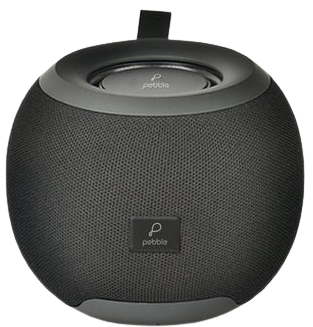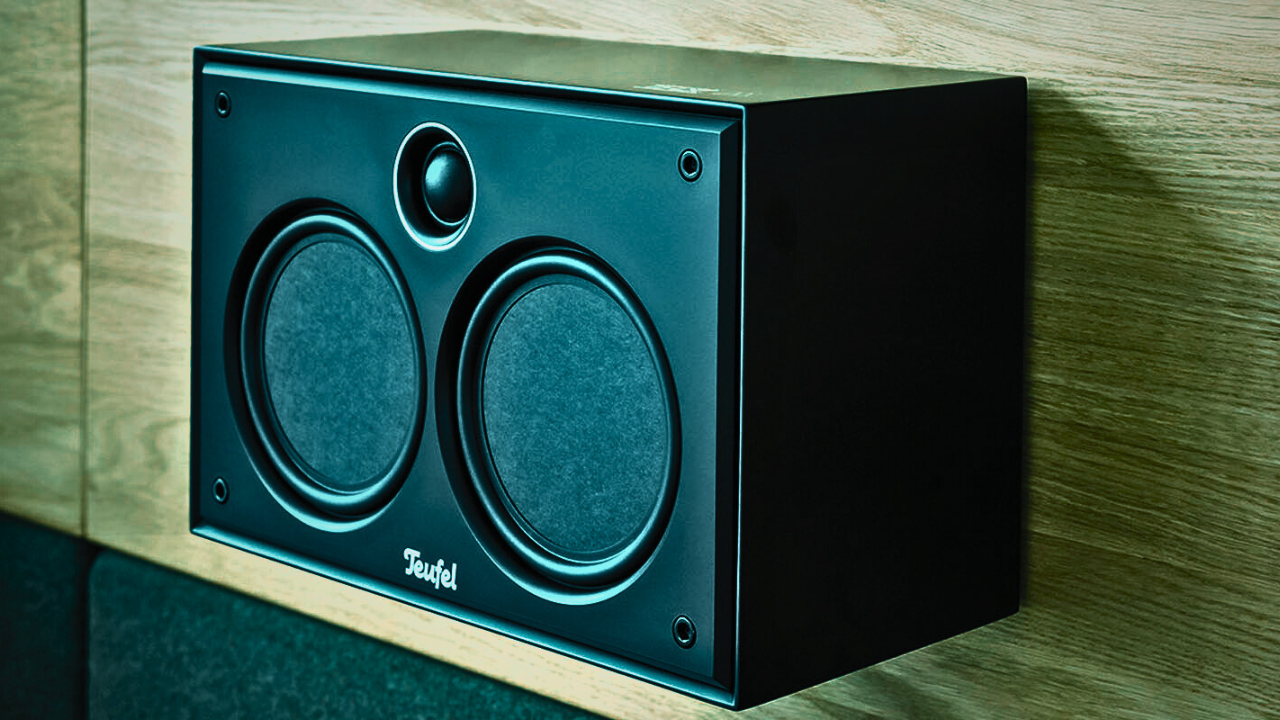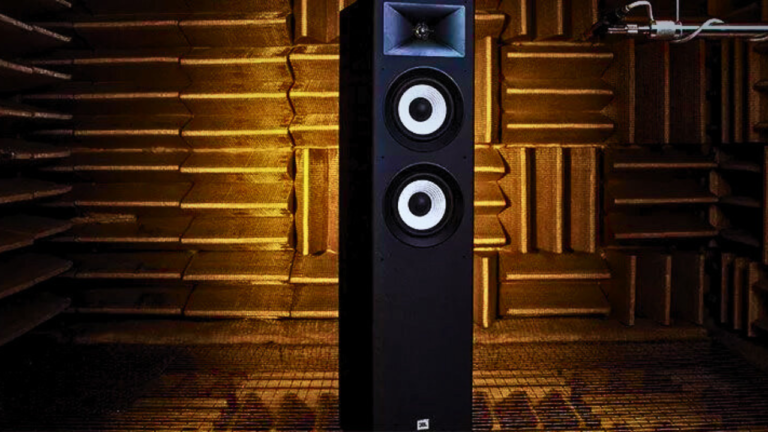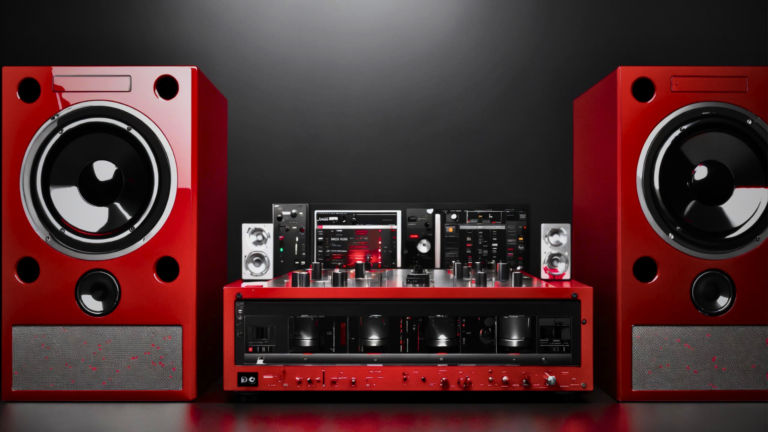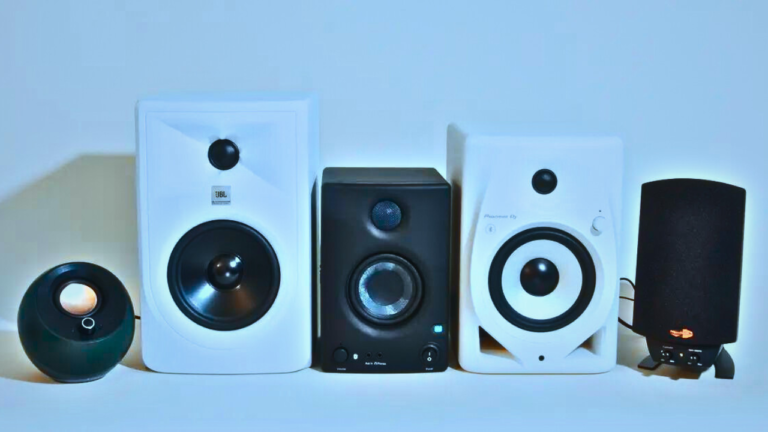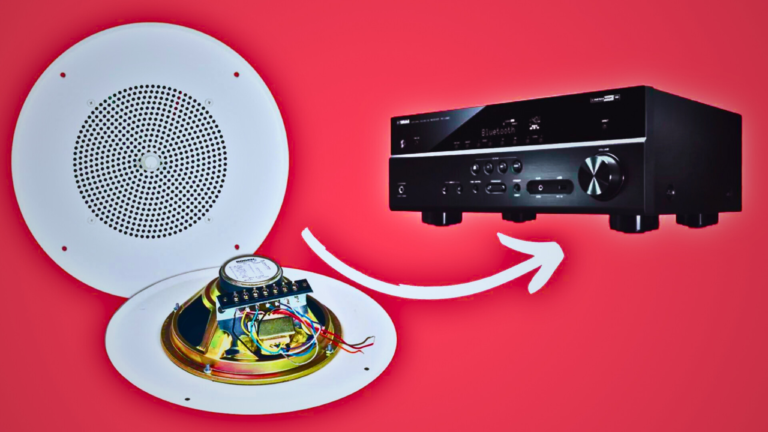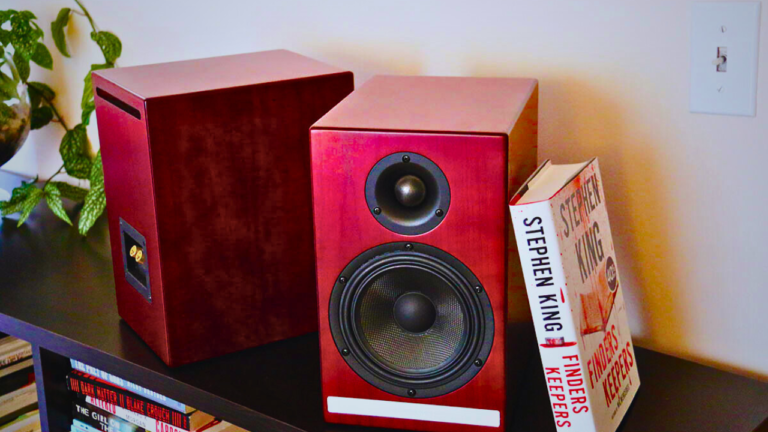How To Mount Heavy Speakers On Wall?
Mounting heavy speakers on the wall can seem like a daunting task, but with the correct tools, a bit of patience, and a step-by-step guide, you can achieve a seamless installation, enhancing your audio experience. From maximizing sound quality to saving floor space, wall-mounting your heavy speakers proves highly beneficial.
Benefits of Wall-Mounting Heavy Speakers
- Sound Quality: Placing speakers on the wall helps enhance audio detail by reducing distractions created when sound bounces off the floor.
- Space Saving: Especially in small living areas, mounting speakers on the wall can free up precious space.
- Safety: Moving your speakers high up prevents accidents caused by tripping over wires and provides precautionary measures against young children or pets knocking them over.
- Aesthetic Appeal: Mounted speakers give your room a clean, modern look and can blend seamlessly with your decor scheme.
“Audio enthusiasts contend that a good speaker can make a good sound system remarkable, but a well-placed speaker can make a sound system outstanding.”
In this article, we’re going to walk you through how to properly and safely mount your heavy speakers on your walls. With our help, you’ll have them up and sounding spectacular in no time!
Read also: Do Record Players Need Speakers?
What are the different types of wall mounts available for heavy speakers?
When it comes to securing hefty speakers firmly on your walls, there’s a range of wall mounts specially designed for the job. The key is to find one that matches the specific size, weight, and design requirements of your speakers. To help you pick the perfect mount, let’s delve into the most common types available on the market:
- Fixed Wall Mount: As the name suggests, these mounts are attached to the wall and hold your speakers in a stationary position. They are perfect for heavy speakers due to their sturdy and robust design. The downside, though, is the lack of flexibility once the speakers are fixed.
- Tilt and Swivel Mount: Offering greater flexibility, these mounts allow adjustments of the speakers’ angle for perfect sound delivery. They can swivel horizontally and tilt vertically, ensuring optimal sound direction whether you’re sitting or standing.
- Ceiling Mount: Ideal for rooms with limited wall space, ceiling mounts hang speakers from above. These provide excellent sound distribution and an uncluttered look. Keep in mind, though, that you’ll need a more complex installation process to handle the heavy weight and avoid potential safety hazards.
- Side Clamping Bookshelf Speaker Wall Mount: Specifically designed for bookshelf speakers, these mounts clamp on the sides of the speaker. They provide a stable and secure set-up while allowing easy removal of the speakers in case of relocation or upgrade.
In conclusion, the ideal wall mount for your heavy speakers greatly depends on your specific needs. Analyze your space constraints, speaker dimensions, and style, as well as your desired flexibility, before making a purchase.
What are the weight capacity and size limitations for wall mounts?
When choosing a wall mount for your heavy speakers, it’s imperative to take into account the weight capacity and size limitations of the mount. These specifications ensure that your speakers will be secure and safe once installed.
Weight capacity simply refers to the maximum weight that a wall mount can hold securely. Most mounts are designed to handle a specific weight range, so be sure to match this capacity with the weight of your speakers carefully. Incorrectly pairing a speaker and mount in terms of weight could potentially lead to damage both to the speaker and your wall—or cause safety hazards.
Size limitations, on the other hand, relate to the dimensions of the speaker that the mount can accommodate. Some mounts are built to cater to certain speaker sizes, so it’s essential to know the exact measurements of your speaker when selecting a mount.
You should always ensure that the wall mount you choose can comfortably bear the weight and size of your speakers to maintain optimum safety and performance.
Generally, manufacturers provide a range for both the weight capacity and size limitations of the wall mount. Following is a model table that represents the kind of data you might find:
What tools and equipment are required for mounting heavy speakers on a wall?

Mounting heavy speakers on your wall requires specific tools and equipment to ensure a secure and safe installation. This isn’t a job you should take lightly; an improperly mounted speaker can damage your wall or even cause injury if it falls. Here are the essential tools and equipment you may need:
- Speaker wall mounts: This is obviously a must-have. Speaker wall mounts come in various sizes and designs, so ensure you choose one that is suitable for the weight and size of your speakers.
- Drill: A drill is essential for making holes in the wall for screws. A wireless drill is more convenient, but make sure it has enough power to drill through your wall material, especially if it’s made of concrete or brick.
- Level: A level is useful for making sure the mounts are straight. This is crucial for aesthetic reasons and for the speaker’s functioning.
- Screws and Wall Plugs: You will need strong and durable screws to attach the mount to the wall. The type of wall plugs or anchors you require will depend on the material of your wall. Concrete walls require different plugs than drywall. So, make sure you have the right type for your specific situation.
- Stud Finder: Heavy speakers should be mounted to wall studs for maximum stability. A stud finder is a device that can detect the location of studs behind the wall surface.
- Measuring Tape: To ensure you mount your speakers at an optimal height and distance, a measuring tape is crucial.
- Pencil: A pencil comes in handy for marking hole positions on the wall prior to drilling.
Although this might seem like a comprehensive list, it’s important to note that the specifics may vary depending on the type of wall, the weight of the speaker, and the mount you select. Always refer to the instruction manual that comes with the speaker wall mounts for additional requirements and steps.
Read also: How To Tune 4 Channel Amp For Door Speakers?
What are the recommended steps for securely mounting heavy speakers on a wall?
Mounting heavy speakers on a wall is a meticulous process that comes with several recommended steps to ensure the safety and precision of the installation. Always remember, the goal is not just to get the speakers on the wall, but to have them stay there without causing any harm or damage. So, let’s take a breather and follow the guidelines outlined here:
- Choose Your Mounting Area: Try to select a space on your wall that can easily handle the weight of your speakers. Avoid anything loose or unstable, such as plasterboard or drywall, without proper reinforcement.
- Measure Accurately: Use a measuring tape to note down your speaker’s height, width, and depth. Use these dimensions to mark your wall mount placement, ensuring an accurate and snug fit.
- Drill Pilot Holes: Drilling a pilot hole doesn’t only lead to a seamless installation but also aids in reducing the risk of splitting the wall. So, once you’ve marked your spots, drill your pilot holes.
- Install Wall Mount Bracket: Next, take your mount bracket and align it with the pilot holes. Insert the screws through the bracket holes using a screwdriver or drill, securing the bracket to the wall.
- Attach the speaker: This is where you need to be particularly careful. Gently align your speaker with the mounted bracket and slowly place it. Do it patiently; make sure your speaker’s connection points are properly engaged with the mount’s arms.
- Safety Check: Wiggle the speakers slightly to check for any instability. If they are securely mounted, they’ll remain steadfast. If the speakers seem unsteady, it indicates you need to reinforce the mount or adjust the screws.
Note: This can be a great weekend project, but only if you understand all the steps thoroughly. If you’re unsure, it’s always safer to hire a professional to do the job.
In our next section, we will discuss some of the specific safety precautions you need to consider when mounting heavy speakers on your wall.
Are there any specific safety precautions to consider when mounting heavy speakers on a wall?

Indeed, safety should always be your number one priority when undertaking any home improvement task, and mounting heavy speakers is no exception. Below, we’ve compiled a list of measures to ensure your project doesn’t result in harm to yourself or damage to your property.
Proper Wall Support: It’s crucial that the wall you choose to mount the heavy speakers on can support the weight. Plaster or drywall may not be optimal unless you can locate the studs behind them. Masonry or concrete walls are typically best for heavyweights.
Correct Mounting Hardware and Tools: Always use the correct mounting hardware and tools as specified by the speaker and wall mount manufacturers. Substituting screws, bolts, or other hardware could lead to an unstable mount and potential failure.
Helping Hands: Don’t undertake this task alone. Mounting heavy speakers is a two-person job. A helper can hold the speaker steady while you concentrate on aligning and securing the mount.
Note: If you’re not extremely confident in your mounting abilities, don’t hesitate to hire a professional. It’s always better to be safe than sorry when dealing with such heavy equipment.
Check and double-check: Once the speakers are mounted, carefully check all the screws and bolts to ensure they’re secure. Give the speakers a gentle push. If they wobble or move, they’re not secure. Correct any issues before using the speakers.
Protective Gear: Don’t forget to wear safety glasses and gloves when drilling holes and inserting screws. This will protect your eyes from dust and your fingers from any sharp edges or mishandled tools.
In conclusion, mounting heavy speakers can dramatically enhance your sound system, but it must be done safely to ensure your enjoyment isn’t marred by an accident or damage to your home. Exercise caution, follow the guidelines, and you’ll have those speakers up in no time.
Conclusion
And with that, my friend, you’re fully armed with all the essential information necessary to mount those heavy-duty speakers on your wall! We’ve dissected what you need to know, like the types of wall mounts available, weight and size restrictions, required equipment, and the crucial steps in getting the speakers safely and securely adorned on your wall.
Remember, this task may involve considerable weight and balance control, so it’s crucial to follow the instructions and adhere to safety precautions precisely. Heavy speaker mounting is not a job to rush; take it slow, take it steady, and you won’t regret the results.
“The better you plan, the less you’ll have to worry about in the future.”
This bit of wisdom certainly applies when it comes to mounting hefty speakers. Also, listen to your wall. Seriously! Know its strength, substance, and capacity. Be certain that it can indeed bear the weight of your audio giants.
If, for any reason, you’re unsure, it’s always a good idea to get a professional’s opinion or hire skilled help. After all, your prized speakers deserve to be treated with care, and your walls need to stay standing!
Keep rocking and basking in the immersive audio experience that your well-placed, sturdily mounted speakers will surely give you. Hike up those decibels responsibly!
Read also: How To Connect Two Speakers To One Output?
FAQs
How heavy can a speaker be to be wall-mounted?
It primarily depends on the wall type, the mount or bracket’s design, and its specifications. Always check the recommended weight limit and adhere to it strictly to avoid mishaps.
Can all types of walls support heavy speakers?
Not all. Lightweight walls, like those made of drywall or plasterboard, might not be sturdy enough. For such walls, you’d need to use mounts that are specifically designed with supportive equipment like toggles or anchors.
Can mounting brackets damage the speakers?
No, provided they are installed correctly and are of the correct size and weight capacity for your speakers. Also, ensure not to overtighten the screws during installation.
Can I wall-mount speakers myself?
Yes, with the right tools, understanding, and safety measures, you can. Our earlier sections covered the exact steps to mount heavy speakers on a wall. That said, if you’re unsure, it’s always best to call a professional.
Is it necessary to buy speaker mounts of the same brand as my speakers?
Not necessarily. While matching brands can ensure compatibility, many universal mounts can comfortably accommodate various speaker sizes and weights. Always check the specifications before purchasing.
Can wall-mounted speakers be adjusted?
Yes, some wall-mount systems have a maneuverability function to adjust the position and direction of the speakers, providing optimal sound dispersion.
How high should wall-mounted speakers be?
The height can depend on several factors, including room size, acoustic preferences, and your listening position. A common rule of thumb is to place them at or slightly above ear level when seated.
Are wall mounts safe to use for outdoor speakers?
Yes, many wall mounts are designed for outdoor use and made of materials like stainless steel that can resist various weather conditions. Make sure to check the mount’s product description before purchasing.
Do I need to drill holes in my wall to mount speakers?
Typically, you do. If drilling a hole in your wall isn’t an option, you might want to consider speaker stands or shelves instead.
Where is the best place to mount my speakers?
This is determined by the layout of the room and the location of your primary seating area. For optimal sound, most professionals recommend mounting speakers on the wall opposite the seating area.

Hey there! I’m Henry Jack, the voice behind speakerrealm.com, your ultimate destination for everything speakers. Whether you’re a seasoned audio enthusiast or just starting to explore the world of sound, you’ve come to the right place.
At Speaker Realm, I dive deep into the realm of speakers, bringing you comprehensive reviews, insightful guides, and the latest trends in the industry. From floor-standing behemoths to compact bookshelf wonders, I cover it all.
I’m passionate about helping you find the perfect speakers to elevate your audio experience. Whether you’re setting up a home theater, upgrading your sound system, or just looking for some quality audio gear, I’ve got you covered.
But Speaker Realm isn’t just about technical specs and performance metrics—it’s also about the art and science of sound. I explore topics like acoustic design, speaker technology, and the impact of audio on our lives.
So whether you’re a casual listener or a hardcore audiophile, join me on this journey through the world of speakers. Let’s turn up the volume and explore the endless possibilities of sound together at speakerrealm.com!
